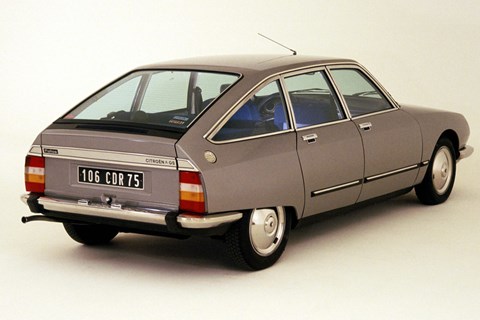► Launched in 1970 – with revolutionary aerodynamics
► Advanced hydropneumatic suspension and flat-four engine
► But, was it too clever for its own good?
At the recent Retromobile classic car show in Paris, Citroen celebrated the 50th birthday of one of the most bittersweet cars in its history. It unveiled a GS given a makeover by noted French interior designer, Tristan Auer, who thankfully didn’t play around with the overall shape of the car or its interior – aside from some interesting new trims and materials. Was it enough of a tribute for such an innovative car?
The Citroen GS was a technical marvel when launched in August 1970, but the cost of developing this all-new car from the ground up undoubtedly contributed to the company’s near bankruptcy and subsequent bail-out in 1974. It was the second of a trio of models that started with the SM just a month earlier and would culminate with the flagship CX. This advanced threesome would completely reinvent Citroen, even if the cost of developing them came at the cost of the company’s independence.
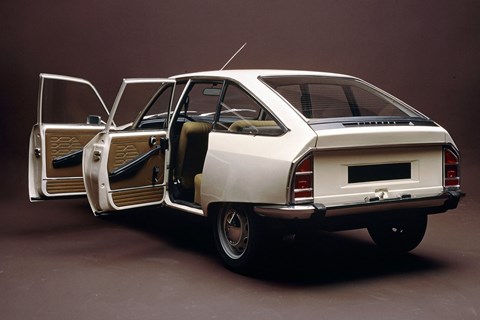
Looking at the GS today, it’s hard to believe that this highly aerodynamic small fastback saloon has knocked up a half century. And for younger readers, it must be difficult to comprehend that such a space-age effort was once one of the most popular imported cars in the UK throughout the 1970s, as well as the doyen of countless victorious CAR magazine group tests. But it was, managing to knock up more than 2.5 million sales before it hit the end of the road in GSA form in 1987.
In CAR’s history, it had to play second fiddle to the equally-advanced Alfa Romeo Alfasud, even though the GS was cheaper, more technically dense, and sold better here. More often than not, it was awarded the best family car prize in the mag’s annual round-ups, and when GBU first appeared In 1976, it went straight into ‘interesting’, a place it remained to the end of its life. In 1991, Richard Bremner memorably compared the GS with the then-new ZX hatch in a CAR twin test – and the new car came a distant second asking the question, ‘where’s the progress?’ This was very much a CAR kind of car.
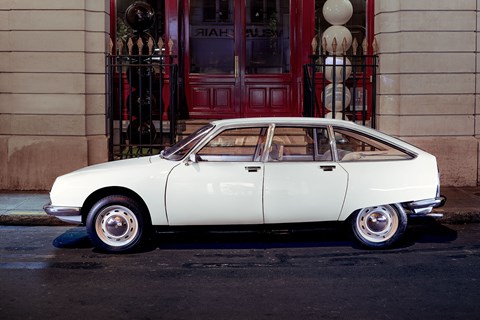
Why the GS matters today
Ever since DS Automobiles was hived off from Citroen in 2014, the GS and its larger brother, the CX, have had a bigger role to play than before. With the iconic Citroen DS and SM now belonging to PSA’s premium division, it’s been the job of the GS to step up to the plate and demonstrate just how far ahead of the game the company was… without mentioning the DS and SM. The good news is that the GS is more than up to the task.
The most arresting element of the GS is undoubtedly its styling. Citroen denied that this Kamm-tailed fastback owed anything to Italian styling concepts of the 1960s, but there was something of the carrozzeria about it – but like the larger DS before it, the aerodynamics were more than just implied in its lines.
In its slipperiest form the Robert Opron-styled GS boasted a drag coefficient of just 0.318 – which compared with around 0.45 for its more conventionally designed rivals. Put that into perspective, the highly-touted 1982 Ford Sierra could only manage 0.34, and the car that was supposed to replace it – the BX – was 0.35.
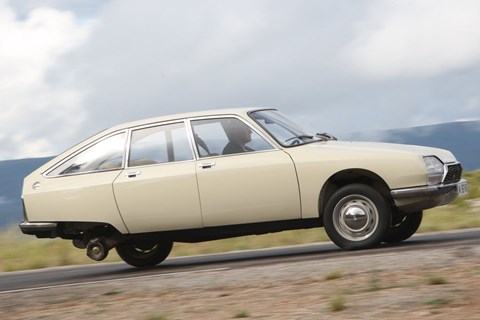
Then there was the suspension. Like the DS, it was a Hydropneumatic set-up that blessed this small, lightweight saloon with a ride quality that would put most luxury cars to shame, but thanks to clever geometry and overall design, it didn’t heel over in corners or feel wallowy at speed. The soft ride was complemented by soft and supportive seats – this was truly a small car that you could comfortably travel long distances in. And you can drive it on three wheels (above).
The engine was also all-new. And as you’d expect from Citroen at the time, it was both unconventional and brilliant. The air-cooled flat-four originally displaced a mere 1015cc and developed 55bhp, but was capable of happily revving its heart out all day long. So, although its 0-60mph time was around 17 seconds and its top speed was 92mph, it would keep up with larger cars because sprint gearing meant that it its brilliant little engine was in the heart of its powerband more of the time. Yes, it was noisy and used more fuel than its rivals, but it was also highly effective. And petrol was still 50p per gallon.
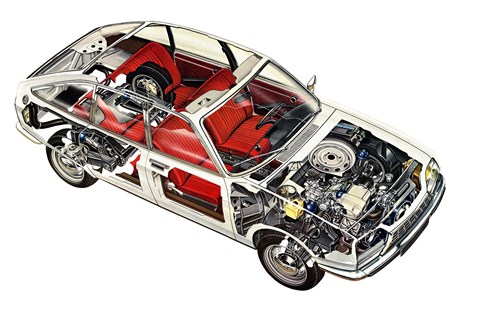
In short, compared with what the rest of the industry was doing at the time, the 1970 GS was revolutionary. When this car went on sale, you could still buy a new Morris Minor, and the UK’s answer to it – the Austin Allegro – would be along in another three years. We weren’t alone in being so far behind the curve – in 1970, Germany’s answer was the Volkswagen Beetle (the Golf was four years away), while the Italians would have to wait another year for the Alfasud to breeze in.
What did Tristan Auer do to the GS for its 50th?
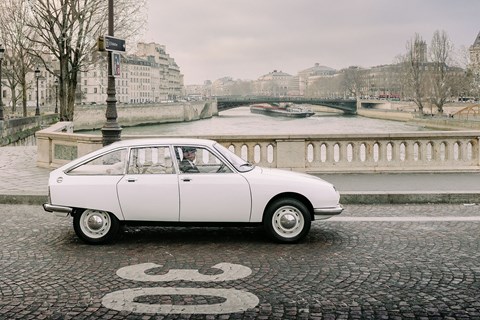
To celebrate, Citroen donated a 1972 GS 1015 Confort to celebrated interior designer Tristan Auer. He was commissioned to transform the car so it can be used as the courtesy vehicle for the upscale Les Bains vintage hotel in the heart of Paris for the next three years. Citroen figures that this super-trendy venue, opened in 1978 and renovated by Auer in 2015, matches the style and elegance of its family car of the ‘70s.
And on the whole it does, even if back then, the GS had no such delusions of grandeur. Thankfully, Auer didn’t mess too much with the car, exercising taste and restraint. So, it’s been given a lick of paint and a retrimmed interior, which suits the car perfectly. As you can see from the accompanying images, it’s a light re-imagining of the car. Auer says, ‘it is an honour and a real treat for me to have been able to work on this Citroen GS, an extremely well designed and popular car, which I have been able to rediscover.’
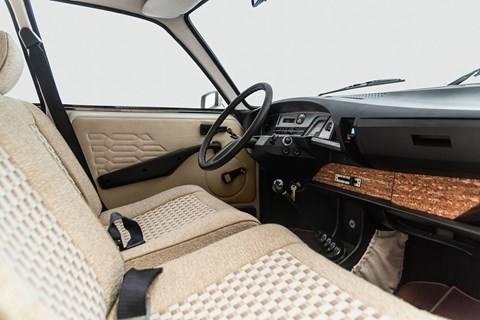
What is the GS’s legacy at 50?
If we’re being cruel, it would be to show the rest of the car industry how not to do things. It cost a fortune to develop and as clever as it was, it inspired no other carmaker to follow in its tracks. Its air-cooled flat-four engine was willing but noisy – and absolutely no one copied this layout once the 1970s were underway. The suspension, as brilliant as it is, was also expensive to produce, complex and heavy – and again, only Citroen persevered with it.
But that doesn’t take anything away from the GS. Far from it – Citroen proved that clever and ingenious engineering solutions could result in a car that lifted the expectations of its buyers, and hurry-up its rivals into building cars that could match its high standards of comfort, performance, space and dynamics. More than that, with 2.5 million examples sold, it was undoubtedly a hit which proved that the average family man didn’t always accept orthodox solutions and staid styling.
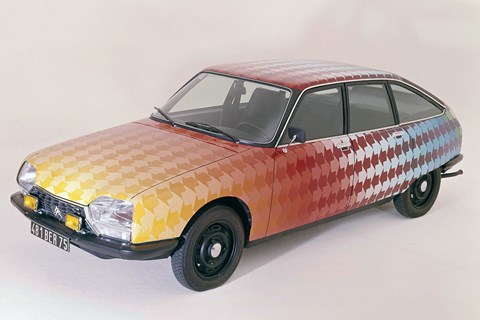
But I would like to overturn CAR’s proclamation that the Alfasud was the Car of the 1970s. I reckon the GS is even more CAR than the ‘Sud. Hindsight is a wonderful thing, but I think the GS just pips it for being cleverer, more usable, and – back then as now – far more affordable too. The Italian car had sportier handling, but it rusted even more savagely than the GS, had the strangest of driving positions and today the Citroen is probably the more pleasant car to take on any journey.
Before Citroen congratulates itself too much – consider that for every single GS and GSA built between 1970 and 1987, Toyota sold four Corollas – and made a damned sight more money in doing so…
Read more
Celebrating the Citroen centenary
Alfa Romeo Alfasud first details
